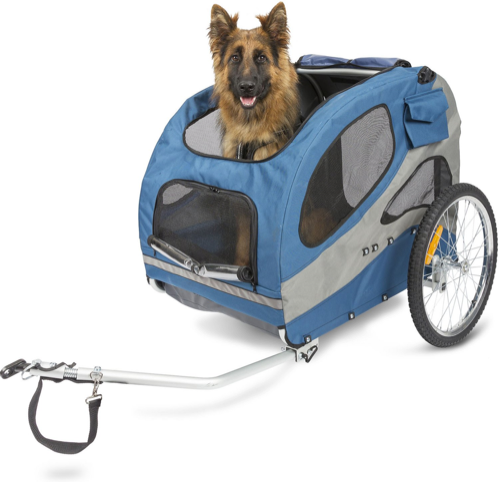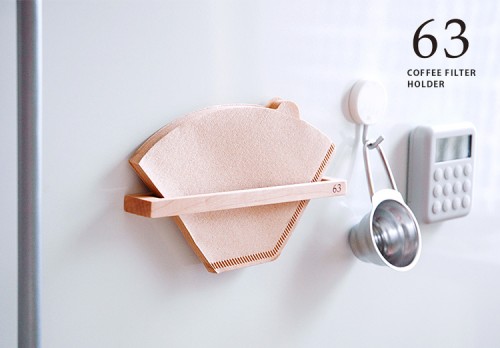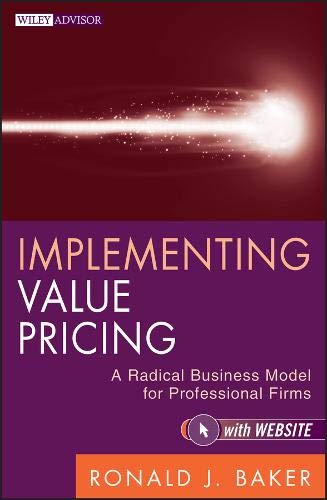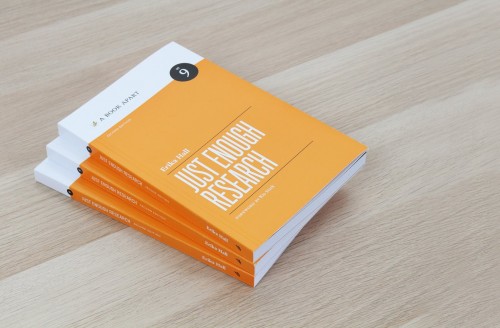Erika Hall, Co-founder of Mule Design

Cool Tools Show 219: Erika Hall
Our guest this week is Erika Hall. Erika is the co-founder of Mule Design based in San Francisco and the author of Just Enough Research and Conversational Design. You can find her on Twitter @mulegirl.
Subscribe to the Cool Tools Show on iTunes | RSS | Transcript | See all the Cool Tools Show posts on a single page
Show notes:

3” x 5” Index Cards
I literally trail these behind me sometimes. When I travel to a workshop, or a conference, or a client meeting on an airplane, frequently I’m organizing my work and just spreading them all over the place, a little trail of cards. It’s just because they’re inexpensive, and you can find them everywhere. You can use them on horizontal surfaces. I think they’re better for collaboration with everybody gathering around a desk and you can organize them and reorganize them, and you can save them. You can do the weird Merlin Mann thing and bundle a bunch up with a little binder clip. I find that they’re fantastic for organizing complex thoughts because a lot of times I’m working on helping a client with a design system, or to organize some concepts, or to write a book or an article, and you can take notes on them and then you can save them, and carry them, and reorganize them, and constantly recombine them. They’re a lot sturdier than a Post-It note and you can hand them around.

PetSafe Happy Ride Pet Bicycle Trailer
My weird little dog, Rupert, is very important. And I really love to bike and I don’t have a car, that’s really how I get around, so when I do go into the studio I take Rupert with me and I take him in a bike trailer that attaches to the back of my bike. It is a dog specific bike trailer. But I have used it for other things. It’s really handy. Sometimes if I’m biking past Trader Joe’s on the way home, Rupert now knows if I stop at a store he’ll scoot over to the side because he’ll know that a bag is going in. There’s a sun roof kind of deal and I can pop the bag down in there with him, or if I have to run an errand and I want to get more groceries I can also put groceries and no dog in there.

Roxane magnet coffee filter holder /63
We have a nice drip coffee maker, a Technivorm Mocha Master, which if you like drip coffee, it makes the best coffee. But we keep it on our counter underneath our cabinets and our cabinets are metal. Because of the configuration of our kitchen there was no good place to keep the filters and every place we put them felt really disorganized and out of place. We’d have the filter bag, we’d keep a couple on the counter or we’d have it tucked away somewhere else. This was actually a situation that created a certain amount of angst of having one type of thing out of place with no home. A couple years ago I went to Japan for a conference and I was walking around, just going in the little stores, and I randomly walked into a little boutique that had clothing and a little jewelry, and a little accessories, and a few little home goods. Sitting there on the table was a piece of wood, and it was labeled magnetic coffee filter holder, like it was made for me. I freaked. I just lost it. I was like this solves this intensely, highly specific problem. It’s so elegant, it has no visible magnet. It looks like it’s just this hollow trapezoid shape. It’s perfectly designed for somebody who has a drip coffee maker, because it’s made to hold those cone shaped filters. Every day when I make coffee in the morning it brings me joy because the filters are very tidy right above the coffee maker in such a convenient place. I love it. It’s one of my most beloved objects.

Implementing Value Pricing by Ronald J. Baker
I’ve been in the services business a very, very long time and one of the things I work with clients on often is their pricing strategy. Generally, if you’re doing something online, you’re hoping to either make money if you’re a for-profit company or raise money if you’re a non-profit organization. There’s so much angst around “what do I charge people”, “how do I make sure that I make enough money to either support my mission or to make my organization profitable”. Designers are already so often low self-esteem and freaked out anyway and are so worried about what to charge clients. But it’s a good and functional thing in society if people charge an appropriate price for something so that other people pay it and then get something that’s valuable to them. Why I really like this book is that his model is to help get people away from the hourly model. If people are buying design services a lot of times they’ll say, “What do you charge per hour? What’s your rate?” That doesn’t make sense in a lot of cases like you’re valuing the wrong thing because, really, you don’t care how much somebody spends on something, you care about the outcome. But for whatever reason, it’s really uncomfortable to say as a designer I’m going to charge you $100,000 for an outcome. A lot of designers are so uncomfortable if they can’t back that up with detail about every single way they’re going to be spending their time. But that makes no sense because the client doesn’t benefit from you spending time, the client benefits from you achieving something. If you achieve something really valuable faster everybody’s happy. But if you’re charging hourly, you lose.
About Just Enough Research, Second Edition:

Way back in 2013, which now seems a millennium ago, I wrote a really short book about design research because I was in the position of trying to convince clients that research, like understanding the problem, was not an optional part of the world, that you need to not only understand your customers and how they live their lives, you need to understand your own business, which is the part that people forget about a lot to really be clear about what their goals, or capacity, or capabilities are. You need to understand the world in order to solve a problem that exists in the world. I wrote this little orange book and then people seemed to like it, and years passed, and I thought, oh well I should revise it so that people feel comfortable recommending a book that’s new again and go through the whole thing to make sure it’s really up to date. I added a chapter on surveys which I’d left out of the first version because I think surveys are really advanced and nobody should be running surveys who doesn’t have a master’s degree. But unfortunately, here’s a case where the tools are a problem because the tools for creating surveys are so easy to use now. It used to be it wasn’t that easy to just all of a sudden survey 1,000, 10,000 people. But now the tools are really good and that makes people think that running a survey is actually really easy, but designing a survey is really hard to do it right. I wrote a whole chapter going in-depth about the pitfalls and what to think about so that you don’t use a very easy tool to get some garbage data that will then lead you to make a really bad decision, which happens a lot.






